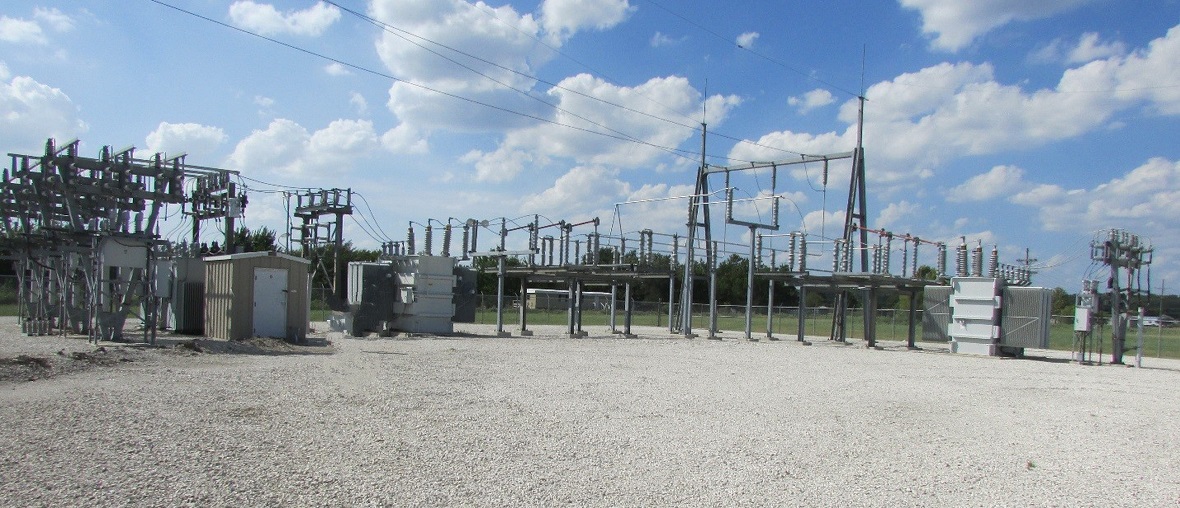
SPCC Plan Consulting Services Electric Power Coop Substations
What is an SPCC Plan for Electric Power Coop Substations?
Electric utilities frequently store large quantities of oil. This is primarily due to the utilities’ extensive use of oil-filled power distribution equipment, which includes transformers, voltage regulators, circuit breakers and autoreclosers. The oil contained in these devices is designed to both cool and insulate the electrical conductor. Typically, these devices are located at substations, which are usually unmanned. By regulation, the oil contained in the power distribution equipment is considered an “oil” under the Spill Prevention, Control and Countermeasures (SPCC) rule which is administered by the United States Environmental Protection Agency (USEPA) per 40 CFR §112. The intent of the SPCC rule is to set guidance to prevent oil from entering the navigable waters of the United States. The SPCC rule defines several classes of oil storage. The most common is bulk oil storage, which includes tanks, drums, and other vessels that store oil before it is used. Oil-filled power distribution equipment devices fall under a class of oil storage known as oil-filled operational equipment. While secondary containment is mandatory for bulk oil storage containers, USEPA provides an alternative to providing secondary containment for oil-filled operational equipment.
The EPA Clean Water Act requires that any facility that has oil products capacities of 1,320 gallons or more must develop and implement a Spill Prevention, Control and Countermeasure (SPCC) plan in accordance with 40 CFR Part 112. The substation has two options to assure compliance.
- Option 1 – Provide secondary containment: The first option would entail providing an impervious barrier capable of containing the volume of oil held by the largest single vessel. If exposed to precipitation, the secondary containment would also need to hold a reasonable amount of precipitation (typically a 25-year, 24-hour event).
- Option 2 – Implement an Oil Spill Contingency Plan (OSCP): The second option is less disruptive and costly, as the electrical utility would likely prefer to avoid installing secondary containment at a remote facility. Additionally, if secondary containment is not installed, the facility avoids a potential safety hazard due to storage of captured precipitation (from secondary containment) at a facility where high voltage is present. In addition, the utility to commit manpower and resources to addressing oil spills/releases and monitor the facility for oil spills/releases.
SPCC Regulations
A properly compliant SPCC plan will involve a site evaluation visit and cover all applicable regulations including a detailed discussion of the following:
- A explanation of all “oil filled operational equipment”.
- If no Secondary containment is in place, an election to be exempt and include all necessary documents for compliance
- Topographical Maps showing distance to any waterways, bodies of water or intermittent streams
- Diagram of facility detailing the location of all oil product storage vessels and the primary direction of drainage from the facility
- Specific reference to all applicable EPA regulations
- An Oil Spill Contingency Plan detailing all actions to be taken in the event of a major oil spill
- Employee training directives and applicable records
Have a Question?
SPCC Plan Expert
Maurice provides the lowest possible costs while maintaining the highest quality and compliance for his services in developing Spill Prevention, Control and Countermeasure (SPCC) Plans in the electric power substations industry.
SPCC Plans Are Our Only Business
Spillco has provided several thousand SPCC plans in over 30 states for over 700 clients of various industries during the past 10 years. SPCC plans are our only business. We have contracted Professional Engineers who are knowledgeable of the SPCC requirements and are licensed in over 30 states.
We provide Certified SPCC plans for a fraction of the cost of our competitors. The reason is simple. Due to our experience, we developed systems for applications that do not require our time in researching and constructing a specific plan from the initial stage. The information from a facility is molded into our system for a site specific plan compliant with EPA, state and local applicable regulations.